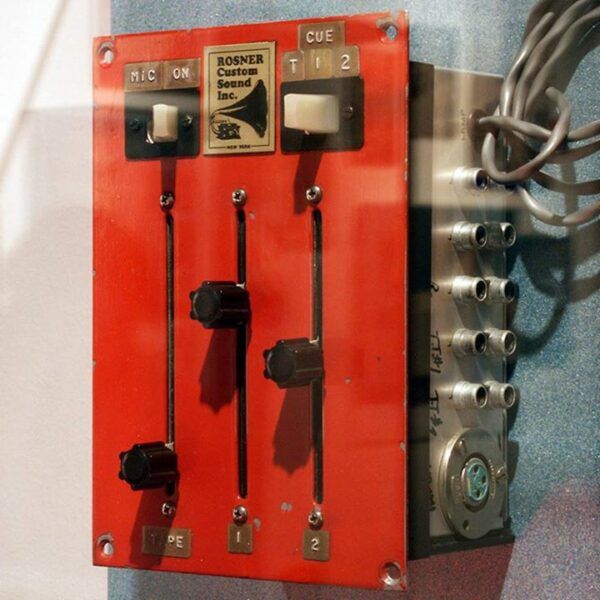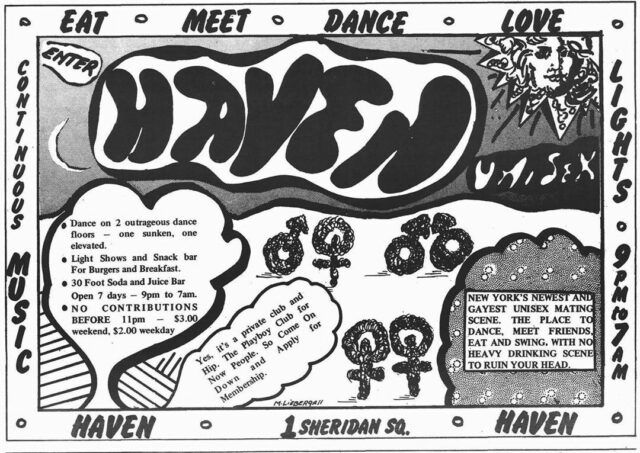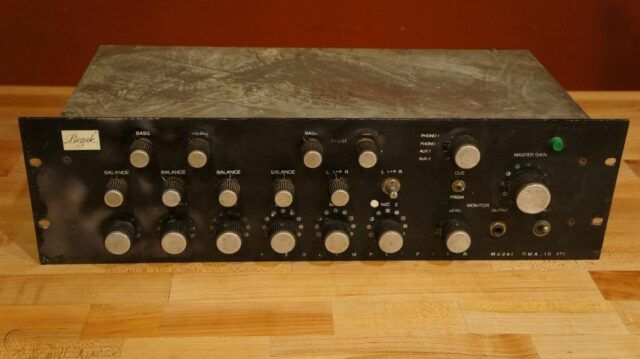There was a time, pre-1971, when all mixers were mono, and the thought of wearing headphones during a nightclub gig was laughable. Dance club DJing came into its own as an art form in the 1960s, but DJs back then were still stuck with mixers designed for radio broadcasting. Sound systems were custom installed at clubs, designed to maximize the acoustic properties of the dance floor so that music would sound clear and loud. Most clubs also had their own record collection in house – crate digging didn’t become a key component of a DJ’s individual identity until hip hop strolled up to the New York scene a few years later.
Rosner, Bozak, Grasso, and the New York scene
Rosie was invented in 1971. Small, simple, and supposedly rugged enough to handle having a Coke dumped on her face (her test for ruggedness is mentioned at the end of this interview, and it’s a great read if you’re interested in acoustics and sound system design), Rosie was DIYed by gearhead and audiophile Alex Rosner, of Rosner Custom Sound. His friend Louis Bozak later picked up on the idea and had Rosner help him design a DJ mixer that could be marketed publicly.

But Rosner didn’t come up with the idea for Rosie out of nowhere. He was working on improving the sound system for The Haven, a dance club in NYC’s Greenwich Village, where famed 70s DJ Francis Grasso developed beatmatching and brought slip cueing into the dance club world from radio broadcasting. Grasso’s technique inspired Rosie. His style created the need for a headphone cueing system that would allow one record to be playing silently while another was simultaneously rocking the dance floor.
Grasso had already been beatmatching at his previous gig at the Sanctuary II – just without headphones or a cueing system. While one song was coming to a close, he would drop the needle on the second record, having already memorized the precise spot to place the needle, knowing both records well enough to have already decided that they mesh. Grasso would blend two records together longer than any other club DJ would dare. But he was confident in his skills, and it showed. Grasso became something of a celebrity in NYC, and opened up his own club for a few years. He’s now thought of as the father of club DJing, the pioneer of continuous dance music.
Rosie, the unsung hero of stereo
The sad, weird truth about Rosie was that Grasso didn’t really need her new features, and in the end, didn’t really use the headphone cueing system that made her famous. When Grasso left the Haven club a few years later, Rosie stayed behind and made it easier for new DJs to work within Grasso’s style. Flyers for The Haven advertised “continuous music,” and the headphone cueing system Rosner developed made it possible for a growing crowd of aspiring club DJs to keep the continuous music going.

According to Rosner, however, Rosie’s true purpose was for higher fidelity sound at the club. Rosner was sure that stereo was the next step towards higher fidelity PA systems, despite skeptics’ belief that keeping the left and right channels separate would muddy the sound. Most people think about headphone cueing and beatmatching when they think about Rosie, but her unsung contribution to the art of live DJing was stereo outputs.
Stereo mixers allow for the left and right channels in the final mix of a song to be sent to separate speakers. Having separate speaker sets for each channel allowed sound systems to be increasingly customized for each club’s dance floor. For example, clubs in NYC often dealt with noise complaints from other floors of the same building or other buildings that shared their walls. Rosner knew that by splitting up the left and right channels and placing them in spaces like tight corners, for example, the corner would work as an extra amplifier, pulling more sound out of the system without having to crank up the master volume.
With stereo mixers, we, the crowd, get to hear the beautiful, banging details of a song without the DJ destroying our eardrums. Rosie brought fidelity out from the living room and into the club.
Making Rosie
Rosner and his team of technicians developed Rosie from the shell of a Bozak broadcast mixer with ten inputs and two mono outputs. He took two headphone amplifiers and installed them in place of the mono outputs, added a slide fader, and created a cue switch that could toggle between either stereo output. One of Rosner’s technicians decided to paint it bright red, which naturally led to the name “Rosie.”
Rosie’s legacy
Not only do I think Rosie deserves a seat among the weird, underrated, and odd DJ gear that made history – I also believe she should be held up as the queen of club stereo sound. Where would we be if every live set was still stuck in mono?
Rosner worked with Bozak to make the mixer widely available. As a result, Rosie became the mother of the Bozak CMA 10-2DL, the first widely distributed, commercially available mixer designed specifically for club DJs. The Bozak was also the first DJ mixer to actually be a portable device. Although most club DJs at the time were priced out of Bozak’s gear, the concept of a truly portable mixer would later allow for the famous block parties where hip hop began.

As far as I know, Rosner is still alive somewhere. But no one has seen the original Rosie in years. I can only hope that she’ll surface again someday, hopefully in a place where she’ll be preserved, recognized for her contributions to music, and allowed to rock the dancefloor again – at least every once in a while.
Are you just as big a fan of Rosie as I am? If you love old-school gear and the history of DJing, check out Tim Lawrence’s book Love Saves the Day: A History of American Dance Music Culture 1970-1979, or Bill Brewster and Frank Broughton’s book Last Night a DJ Saved My Life!





